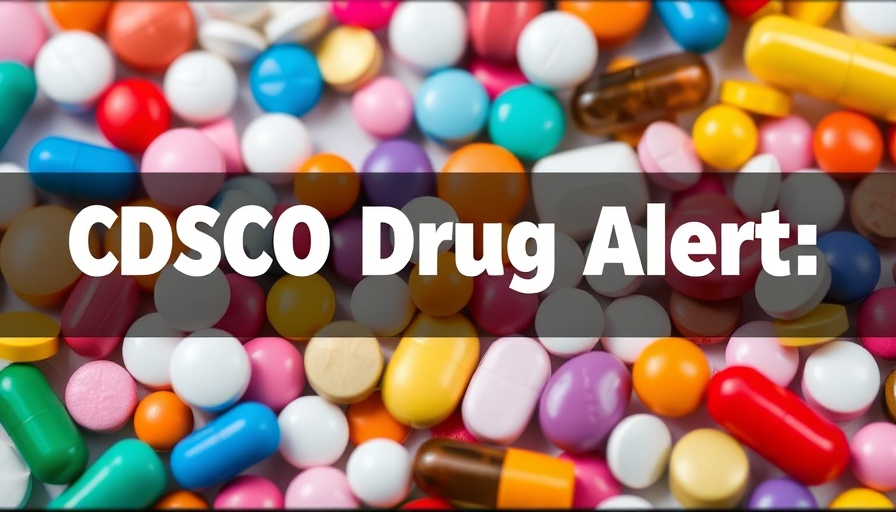
Understanding the Recent CDSCO Quality Test Failures
In July 2023, a concerning report from the Central Drugs Standard Control Organization (CDSCO) revealed that 46 drug batches failed their quality tests. This figure highlights ongoing challenges in ensuring that pharmaceutical products meet required safety and efficacy standards. It raises important questions about the implications for public health and the regulatory process guiding drug approval in India.
The Scope of the Failures
Among the 46 failed batches, a significant percentage were substandard drugs. Each drug batch undergoes stringent testing to assess its quality, including content, purity, and stability. When batches fail these tests, it can signal deeper problems in manufacturing practices or quality control processes. Continued scrutiny of these failures is essential to safeguard consumer health.
Implications for Patients and Healthcare Providers
The failure of these drug batches holds considerable ramifications for both patients and healthcare providers. For patients, taking substandard medication poses serious health risks, potentially leading to ineffective treatment or exacerbation of existing conditions. Healthcare providers must remain vigilant, ensuring that prescriptions and medications prescribed meet the necessary quality standards, helping to maintain trust in the healthcare system.
Root Causes of Quality Failures
Various factors contribute to the quality failures observed. These can include inadequate manufacturing processes, poor supply chain management, and a lack of rigorous testing protocols. In India, the pharmaceutical landscape is vast and complex, often leading to inconsistencies in adherence to regulatory standards. This situation suggests a need for better training and resources to prevent future failures and protect consumer health.
Quality Assurance: A Crucial Focus for the Future
To prevent further issues, it's crucial for the CDSCO and pharmaceutical companies to prioritize quality assurance measures. This includes regular audits, improved training for staff, and implementing more stringent quality control measures. By establishing a stronger foundation for drug manufacturing quality, the industry can enhance public trust and ensure the safety of medications available to consumers.
Future Predictions: Trends in Drug Quality and Regulation
As the pharmaceutical industry continues to evolve, trends indicate a growing emphasis on quality and transparency. Regulatory agencies may increasingly adopt advanced technologies, such as blockchain, to track drug manufacturing and distribution processes. This could lead to enhanced accountability and traceability within the sector, fostering improved drug quality in the long run.
Conclusion: Taking Action for a Safer Pharmaceutical Industry
The recent failures reported by CDSCO should serve as a wake-up call for regulators and pharmaceutical companies alike. By addressing the root causes of these quality failures and implementing rigorous standards, the industry can work to ensure the safety and efficacy of the medications on the market. Stakeholders must unite to enhance the quality controls and practices that underline public health and confidence in prescribed pharmaceuticals.
For both industry professionals and consumers, it is critical to stay informed about drug standards and to advocate for a safer pharmaceutical landscape. Engaging in discussions around these issues promotes awareness and accountability, helping to shape a health ecosystem that truly prioritizes the well-being of all.
 Add Row
Add Row  Add
Add 




Write A Comment